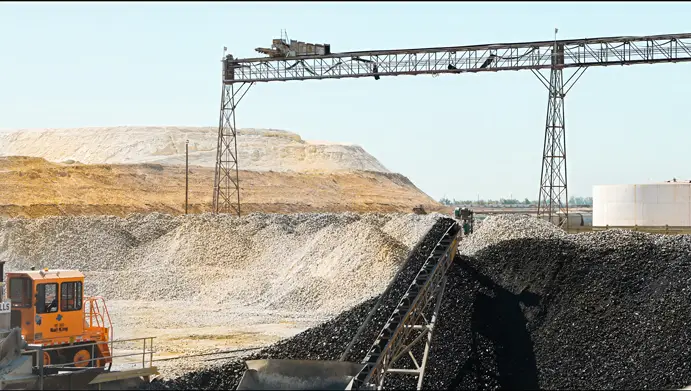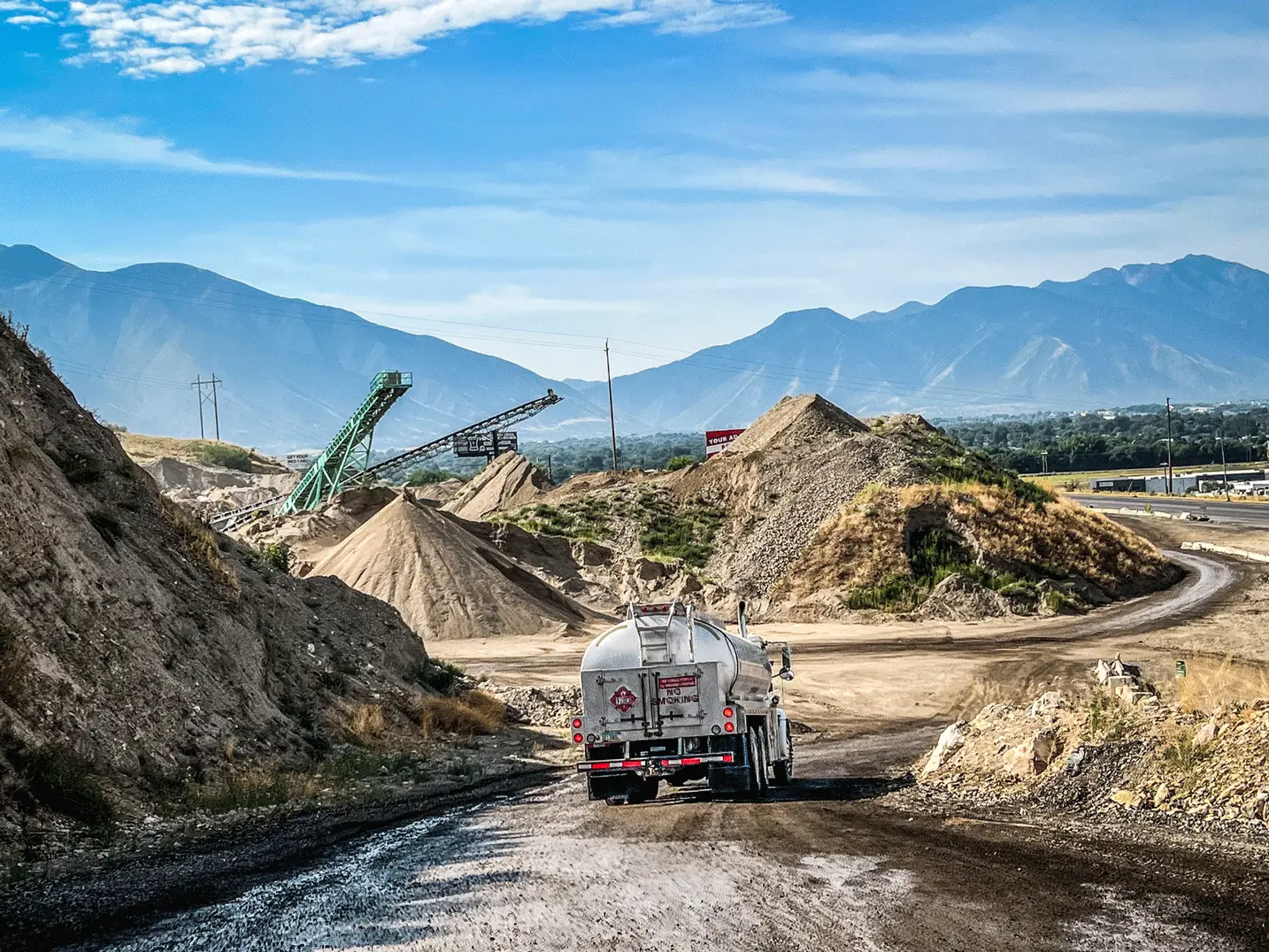How to Improve Mining Equipment Efficiency with the Right Lubricants
Mining operations start early and run hard. Engines hum, steel vibrates, and equipment pushes through demanding conditions without pause. Haul trucks move massive loads, drills cut through solid rock, and loaders operate in heavy dust day after day.
In environments like this, efficiency goes far beyond fuel or horsepower—it’s essential to keeping operations moving. One of the most effective ways to protect equipment and maintain performance is also one of the most overlooked: lubrication. The right mining lubricants ensure machinery runs smoothly, reducing wear and preventing costly downtime.
How Proper Lubrication Protects Mining Equipment
Every piece of heavy machinery in mining has one essential factor in common: moving parts. Gears turn, pistons fire, and bearings spin through demanding cycles. Without the right lubricant, friction increases, temperatures rise, and equipment performance quickly suffers.
Quality lubricants create a protective film between surfaces to prevent metal-to-metal contact. This allows components to glide smoothly rather than grind and helps safeguard engines, transmissions, and hydraulic systems from unnecessary wear.
Over time, that protection leads to more consistent performance, reduced downtime, and longer equipment life. Effective lubrication doesn’t just keep operations moving— it helps mining equipment stay productive for the long run.
Why Heavy-Duty Lubricants Matter in Mining
Mining is demanding work. Equipment doesn’t operate in controlled conditions—it runs in extreme heat, constant vibration, heavy dust, and tough terrain. Standard lubricants break down quickly under this level of stress, which is why heavy-duty lubrication is essential.
These specialized lubricants are built for durability. They resist oxidation, maintain the proper viscosity in high temperatures, and stay workable during early-morning cold starts. Their additive packages help protect against wear, contamination, and buildup commonly found in intense operational environments.
When haul trucks run nearly nonstop or crushers operate around the clock, there’s no room for weak lubrication. The right oil or grease supports consistent performance and helps prevent the gradual wear that leads to unnecessary costs and downtime.
What Happens When Lubrication Fails
Every mining mechanic has seen the consequences of a preventable breakdown—whether it’s an overheated gearbox or a loader that seizes in the middle of a shift. In many cases, the root cause leads back to inadequate lubrication.
When lubricant quality declines or isn’t applied correctly, damage accelerates. Equipment begins to run hotter, seals start to dry out, and small metal particles appear in the oil. Left unaddressed, those early warning signs turn into major failures.
When that happens, the cost goes far beyond replacement parts. Downtime becomes the real expense, and in mining, downtime directly impacts revenue. The price of a lubricant is small compared to the cost of a stalled operation, which is why successful teams make lubrication a strategic priority—not an afterthought.


Why Smooth Operation Starts With Lubrication
When lubrication is done correctly, the difference is clear. Engines start with ease, hydraulics respond more precisely, and equipment runs cooler and more consistently. Operations feel smoother, with less vibration and more dependable performance.
Effective lubrication reduces internal drag, allowing components to move with less resistance. This improves energy transfer, minimizes heat buildup, and supports steady power output. Over time, this can mean additional tons hauled per truck or extended service life for critical equipment.
Small performance gains add up. Across an entire fleet, they translate into meaningful cost savings and a more reliable maintenance schedule. It’s not an extravagant investment—it’s a practical approach that delivers results shift after shift.
Why Mining Conditions Determine Lubrication Needs
No two mining operations run under the same conditions. Some deal with constant dust, others face wide temperature swings, and some operate deep below the surface with added moisture and operational challenges.
Because of that, there’s no universal lubricant that fits every situation. Each site requires products tailored to its specific demands and equipment needs.
In dry, open-pit operations, heavy greases that resist dust are most effective. They create a protective layer that keeps contaminants away from moving components. In underground operations, where moisture and debris are more common, corrosion-resistant oils help protect internal systems and maintain consistent performance.
Temperature shifts also play a major role. High heat can thin a lubricant, while cold conditions can make it too thick. Heavy-duty lubrication products are engineered to stay stable through these variations, ensuring equipment runs reliably.
Understanding how operating conditions influence lubrication is what elevates routine maintenance into smart, strategic maintenance.
How Oil Testing Improves Equipment Reliability
Today’s mining operations rely on more than experience—they rely on data. Regular oil testing, or oil analysis, is one of the most effective ways to monitor equipment condition and spot issues before they escalate.
A single sample of used lubricant provides valuable information. It can identify fuel or water contamination, detect early signs of component wear through metal particles, and show how well the additive package is holding up over time.
This level of insight allows maintenance teams to make informed decisions. Instead of relying on fixed schedules, they can service equipment when it’s truly necessary, reducing unnecessary product use and cutting downtime.
Oil analysis also acts as an early warning system. If iron levels start to rise, for example, it indicates increasing friction inside the machine. Addressing the issue early can prevent costly repairs and lost production. For large operations, shifting from reactive to proactive maintenance turns lubrication management into a strategic advantage.
How Strong Lubrication Practices Protect Your Operation
Mining demands relentless performance. Equipment is pushed hard, crews work long hours, and productivity is always on the line. Often, the difference between a smooth operation and an expensive one comes down to something as fundamental as lubrication.
Choosing the right mining lubricants and following proven heavy-duty lubrication practices doesn’t just maintain equipment—it extends its life, strengthens performance, and helps protect operating costs.
Efficiency isn’t about shortcuts. It’s about focusing on the details that keep machines working reliably. And in mining, those details begin with the lubrication that keeps every component moving.
Why Mining Teams Trust Senergy
Experience matters. Mining operations perform better when guided by experts who understand both the equipment and the conditions it faces.
Senergy Petroleum brings that expertise. Our team supports heavy-industry clients with proven mining lubricants, customized solutions, and hands-on guidance.
We help operators choose the right products, set testing schedules, plan maintenance, and train crews so every gallon of lubricant delivers maximum value.
With Senergy Petroleum, you’re partnering with a team that understands the demands of mining and is committed to keeping your fleet reliable, productive, and ready for the next shift.

